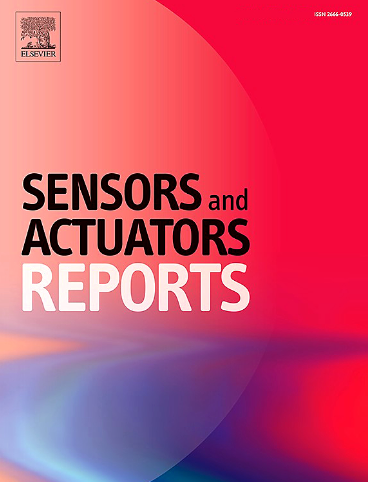Impact of molecular structure and plasticization of PVC membranes in the response of solid-state ion-selective electrodes
IF 7.6
Q1 BIOTECHNOLOGY & APPLIED MICROBIOLOGY
引用次数: 0
Abstract
Potentiometric sensors are essential in various industries due to their high sensitivity, simplicity, and cost-effectiveness. However, enhancing sensitivity, largely dependent on membrane diffusion, remains challenging. This study investigates the role of polyvinyl chloride (PVC) molecular weight and plasticizer type on optimizing potentiometric sensor performance for tartaric acid detection. Two PVCs with different molecular weights (HIGH and LOW) and distinct plasticizers were evaluated. Results demonstrated that membranes plasticized with dibutyl sebacate, a linear plasticizer, exhibited high sensitivity (0.0239 mV/pX) and repeatability, achieving a lower limit of detection (LOD = 4.31 × 10⁻⁵ M) compared to those with a bulky plasticizer. Specifically, HIGH PVC combined with a linear plasticizer provided saturation-free measurements, ensuring greater accuracy in tartaric acid quantification. This research underscores the impact of plasticizer selection on sensor optimization, enhancing accuracy and reliability in food quality control. By establishing the relationship between PVC structure and plasticizer type, this study contributes to advancing sensor technology for improved food safety and quality assessment.

固态离子选择电极对PVC膜分子结构和塑化反应的影响
电位传感器由于其高灵敏度,简单性和成本效益在各个行业中都是必不可少的。然而,增强敏感性,很大程度上依赖于膜扩散,仍然具有挑战性。本文研究了聚氯乙烯(PVC)分子量和增塑剂类型对优化酒石酸检测电位传感器性能的影响。对两种不同分子量(HIGH和LOW)和不同增塑剂的pvc进行了评价。结果表明,用线性增塑剂癸酸二丁酯塑化的膜具有高灵敏度(0.0239 mV/pX)和可重复性,与使用大体积增塑剂的膜相比,达到了较低的检测限(LOD = 4.31 × 10⁻- 5 M)。具体来说,HIGH PVC与线性增塑剂相结合,提供无饱和测量,确保酒石酸定量的更高准确性。本研究强调了增塑剂的选择对传感器优化的影响,提高了食品质量控制的准确性和可靠性。通过建立PVC结构与增塑剂类型之间的关系,本研究有助于推进传感器技术,提高食品安全和质量评价。
本文章由计算机程序翻译,如有差异,请以英文原文为准。
求助全文
约1分钟内获得全文
求助全文
来源期刊

Sensors and Actuators Reports
Multiple-
CiteScore
9.60
自引率
0.00%
发文量
60
审稿时长
49 days
期刊介绍:
Sensors and Actuators Reports is a peer-reviewed open access journal launched out from the Sensors and Actuators journal family. Sensors and Actuators Reports is dedicated to publishing new and original works in the field of all type of sensors and actuators, including bio-, chemical-, physical-, and nano- sensors and actuators, which demonstrates significant progress beyond the current state of the art. The journal regularly publishes original research papers, reviews, and short communications.
For research papers and short communications, the journal aims to publish the new and original work supported by experimental results and as such purely theoretical works are not accepted.
 求助内容:
求助内容: 应助结果提醒方式:
应助结果提醒方式:


